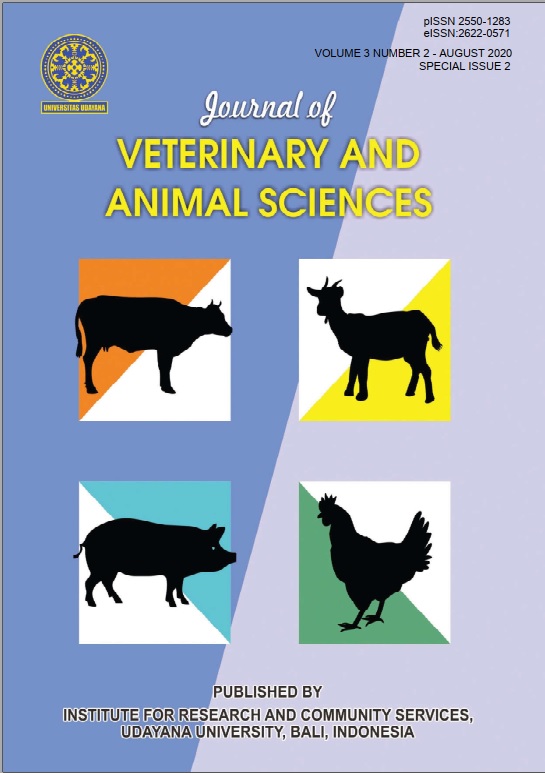Pesticide Contamination in Feed and Histopathological Properties of Bali Cattle Liver Slaughtered in Pesanggaran Slaughterhouse Denpasar
Abstract
The number of crop pests that attack agricultural crops caused farmers to take precautions and treatment of crop cultivation by spraying using pesticides. Spraying action by using this pesticide also affects the grasses that grow around it which is a source of food for cattle. This study aims to evaluate basic data from the image of the liver of a Bali cattle that eats grass contaminated with pesticides and is slaughtered in the Pesanggaran slaughterhouse, Denpasar. Histopathological image of the liver of Bali cattle may vary, depending on the level of contamination of various pesticide ingredients that are eaten by the cattle. To see the histopathological changes in the liver of Bali cattle carried out by staining Hematoxylin Eosin (HE) and then it will be examined under a microscope. Observed changes that occur in the form of fatty degeneration, hemorrhage and necrosis. The study concludes is that cattle slaughtered in the Pesanggaran slaughterhouse, Denpasar come from various districts in Bali and the liver of Bali cattle slaughtered in the Pesanggaran Slaughterhouse, Denpasar are mostly exposed to pesticides characterized by histopathological features in the form of fatty degeneration, hemorrhagic and necrosis.











